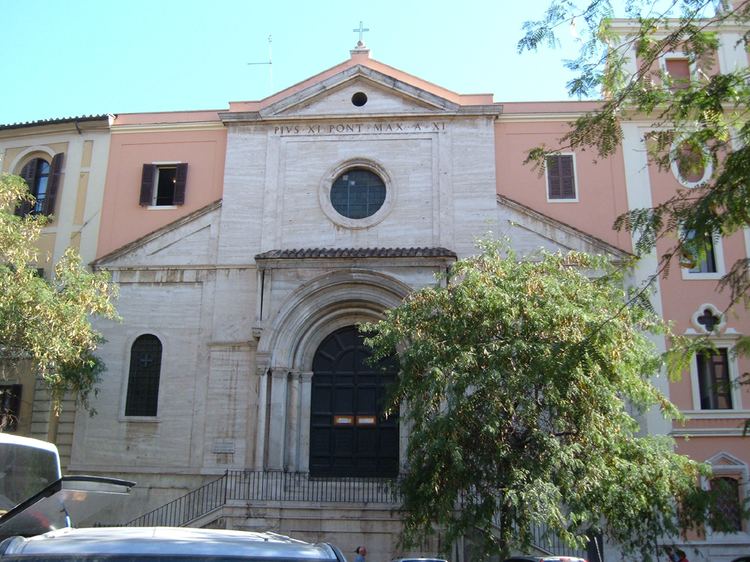 | ||
Similar Sant'Eusebio, Santi Vito - Modesto e Crescenzia, Church of St Alphonsu, Terme Eleniane, Porta Esquilina | ||
Sant'Antonio abate all’Esquilino (Saint Anthony Abbot on the Esquiline) is a church in Rome, located near the Basilica of Santa Maria Maggiore on via Carlo Alberto in the Esquilino district.
History
It was built in 1308 to serve an earlier hospital, built in the second half of the 13th century for sufferers from saint Anthony's fire. It replaced a 5th-century church known as "Sant'Andrea Catabarbara". It was rebuilt under pope Sixtus IV in 1481. In 1583 Domenico Fontana built a chapel of Saint Teresa of Ávila (now rededicated to saints Cyril and Methodius). In 1585 Nicolò Circignani painted frescoes on the interior of the dome.
The church was redesigned internally in the 18th century. It was abandoned shortly after the unification of Italy and the large square in front of the church (where animals had traditionally been blessed on 17 January, St Anthony's feast day) was removed and the level of via Carlo Alberto lowered to create a huge double-stairway, by which the church is now accessed.
In 1928 the church and its surroundings were acquired by the Holy See, which assigned the church to Russian Catholics of the Byzantine Rite and the surrounding buildings to the Collegium Russicum, a centre for Russian and oriental studies. The church's facade is by Antonio Muñoz and incorporates a Romanesque gateway, the only survival from the hospital, and an inscription above it recording the hospital's foundation by cardinal Pietro Capocci.
The interior is on a Latin cross plan with three naves covered by a cross-vault. Each nave terminates in an apse - the main one contains a crucifix by Giovanni Odazzi and the two side ones contain Russian iconostases. The side chapels also hold iconostases and the side aisles contain remains of bas-reliefs found during 20th century restoration work - these are from the ancient church on the site and date to between the 9th and 10th centuries.
